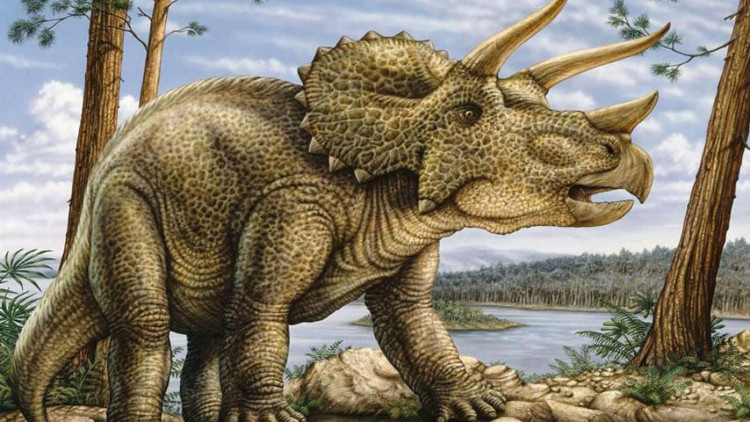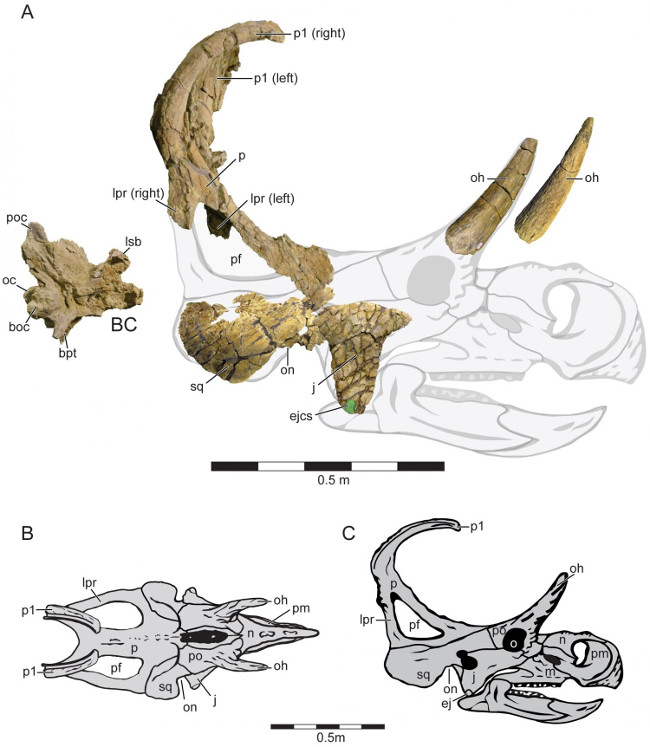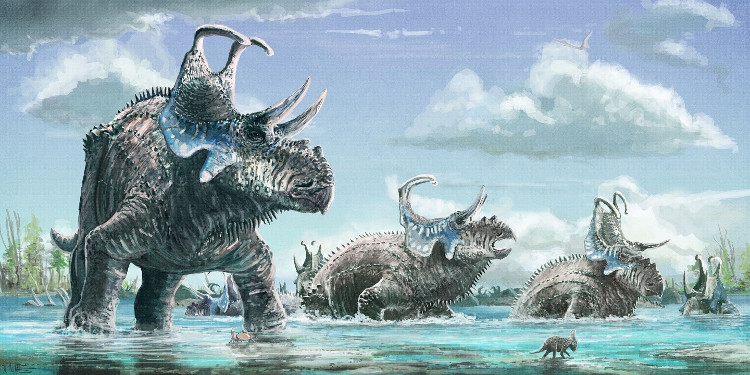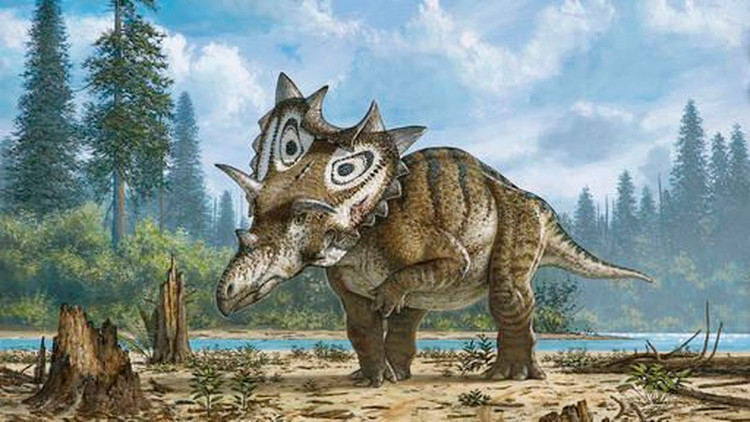Discovered 2 new dinosaurs that hurt archaeologists
With these strange features, this new dinosaur makes archaeologists wonder about the use of that surplus.
In the blockbuster films about dinosaurs, we often only see a Triceratop , the Tam Horn dinosaur , because scientists think they know almost all about this horned dinosaur, and that model of the Tam Horn dinosaur. was the most standard, the only one.

Model of a triceratops dinosaur.
But they were wrong. New scientists have a new discovery: a new species of Tam Horn dinosaur has an extremely overwhelming horn.
In the Wahweap Stratum in southern Utah, archaeologists found the skull fragment of Machairoceratop cronusi at a 77 million-year-old geologic site.

Fossils of new dinosaurs.
Unlike other horned dinosaurs, this 8-meter-long dinosaur has a horn with its head pointing forward, growing on top of its ancient armor. The use of that horn has confused researchers.

The use of that horn has confused researchers.
In another study, archaeologists also found a younger relative of M. cronusi in the Judith River Floor.Spiclypeus shipporum lived about 77 million years ago, with a set of brown horns on their heads and on both sides and on the neck, many strange thorns out.

Spiclypeus shipporum species on their heads have a set of brown horns pointing to the sides and on the neck.
The horns and special spines of S. shipporum will make them recognize the same species in the abundant number of Tam Horns, according to archaeologist Jordan Mallon, who participated in the study at the Ottawa Museum of Nature. . These new discoveries increase the diversity of this herbivorous dinosaur that once raged in North America at the end of the Cretaceous.
"We think we know almost all about this horned dinosaur, but it seems that it is still a surface floating part, " the archaeologist analyzed the newly discovered M. cronusi skull. at the University of Athens, Ohio said.
- Finding dinosaurs with nose
- Detecting fossils of 2 new horned dinosaurs
- Discovered humped dinosaurs like camels in Spain
- Find dinosaurs just as big as ... rabbits
- Discover new dinosaurs that are thirstier than bloody tyrants
- New Australian herbivorous dinosaurs found 15 meters long and weighed nearly 20 tons
- 10 weird, hard to imagine dinosaurs
- Fossil discovery of new dinosaurs
- Discovered new dinosaurs, dating back 200 million years
- Discover super big tyrant dinosaurs
- Discovered bat-like dinosaurs in China
- Find new dinosaurs that have crests like chickens
 Discovered an ancient centipede fossil 99 million years old
Discovered an ancient centipede fossil 99 million years old Discovered bat-like dinosaurs in China
Discovered bat-like dinosaurs in China Discovered a 200-year-old bronze cannon of the coast
Discovered a 200-year-old bronze cannon of the coast Discover 305 million-year-old spider fossils
Discover 305 million-year-old spider fossils